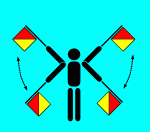And you are basing this on what?
I run a Kenwood NexEdge trunked system at work. I also run a couple of VHF analog systems.
Same dispatch consoles, same dispatchers.
In my work truck I have a Kenwood NX-900 running on the NexEdge 800MHz system. That radio is connected to a large external speaker behind the seat.
I also have a Kenwood NX-700 running on the analog VHF systems. Same large external speaker behind the seat.
Same dispatchers, same console, same radios on my end.
NXDN sounds just as good as 12.5KHz Analog. NXDN has a bit more dynamic range, so I'd say it sounds a bit better than the analog systems.
That's a side by side comparison with identical equipment, except for the repeaters (Motorola Quantar and MTR-2000 on VHF, Kenwood NXR-900's on 800).
Before 2013, the VHF PD and Fire systems were running 25KHz analog. They had a very slight edge over NXDN, but it wasn't a night versus day thing. Just a slight edge.
A couple of points here:
The ITU proposal isn't for NXDN. It's for a 6.25KHz digital based off dPMR. dPMR and NXDN are not compatible, but are very similar.
The ITU hasn't released the standard yet, so this is all assumptions. Until they release it, it might still change.
There are some very intelligent people working on these standards. It's not some random guy in his garage that is making this stuff up.
This will be a global standard.
There will be a lot of benefits going to digital. It's all in the documents for anyone who wants to read them.
The analog versus digital fight has been going on for years. None the less, digital has prevailed.



